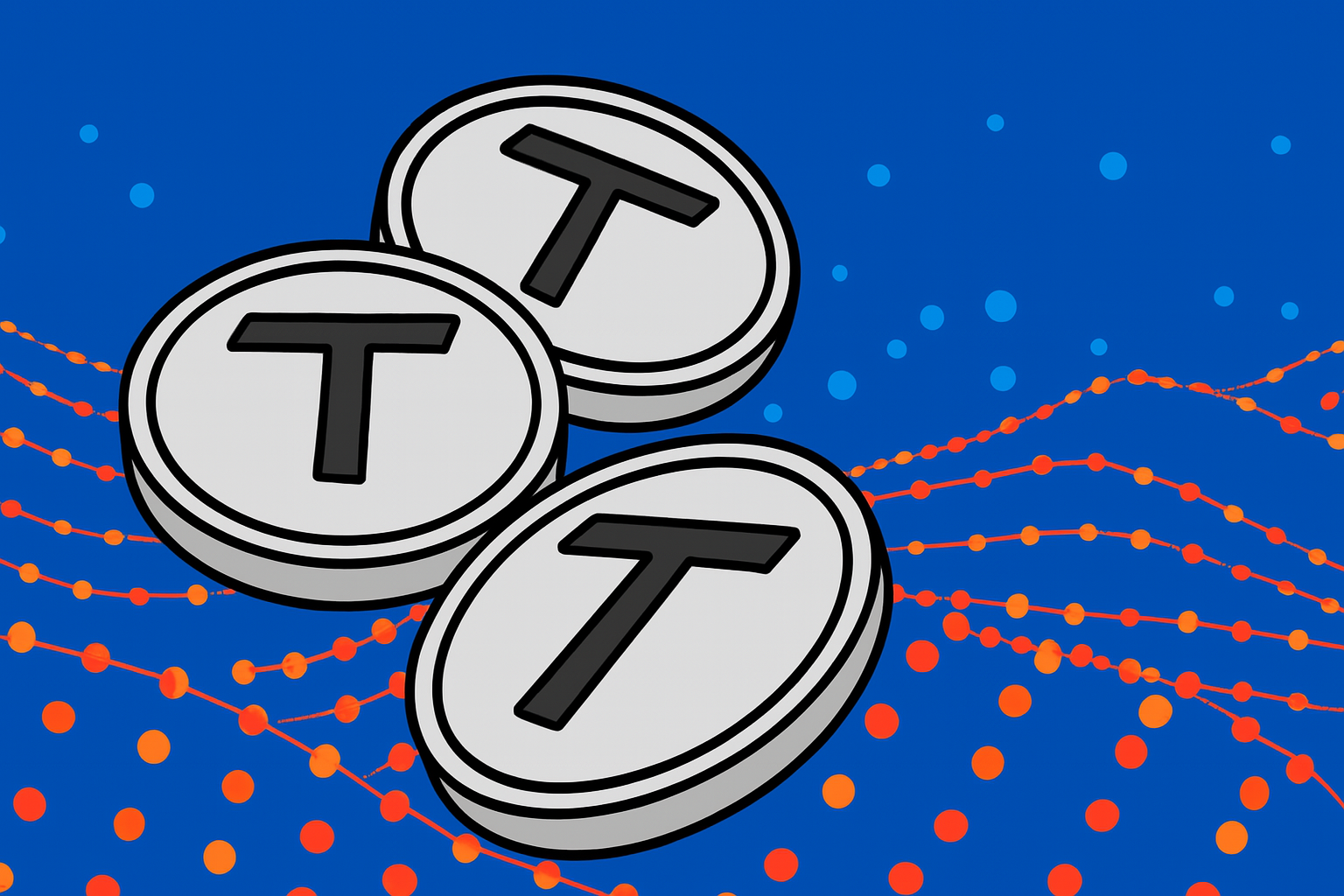
By: Andy
Democratization of AI Subnet Model Changes Everything
The most underrated aspect of Bittensor: It’s not just anti-dilution tokenomics. It’s the world’s first permissionless AI startup accelerator with built-in market validation.
Traditional AI Startup Death Valley
Building AI Infrastructure (Traditional):
- Have genius AI idea
- Build MVP (burn personal savings)
- Pitch 50+ VCs over 6 months
- Get rejected by 48 of them
- Accept term sheet from VCs who want:
- 25% equity for $2M seed
- Board seat
- Veto rights on major decisions
- Anti-dilution protection (but not for you)
- Build product (12-18 months)
- Series A: Give up another 20% at $10M valuation
- Series B: Give up another 15% at $30M valuation
- Exit (if lucky): Own 15% of the company you built
Barriers:
❌ Need VC connections
❌ Need to be in SF/NYC
❌ Need pedigree (Stanford, MIT, etc.)
❌ Need to fit VC thesis
❌ Dilution at every stage
❌ Loss of control
❌ 18-36 month funding cycles
Result: 95% of great AI ideas never get funded because they don’t fit VC patterns.
Bittensor Path (Permissionless AI Infrastructure)
- Have genius AI idea
- Register subnet (costs 1 TAO = $414)
- Set up 1:1 TAO/Alpha pool (seed with 10-50k TAO)
- Define incentive mechanism (code)
- Launch subnet
- Market decides value (immediately)
- If good: Alpha price rises → Higher emissions → More rewards
- If bad: Alpha price falls → Lower emissions → Shut down
- Never give up equity (you keep 18% of emissions forever)
Barriers:
✅ No VC needed
✅ No location requirement
✅ No pedigree requirement
✅ No thesis fitting
✅ Zero dilution (21M token cap, forever)
✅ Keep full control
✅ Real-time market validation (not 18 months later)
Result: Anyone with a good idea + technical chops can launch an AI subnet and let the market decide.
Subnet Deregistration Mechanism (Darwinian Capital Allocation): How It Works
The Rules:
- Network capacity: 128 subnets max (current)
- New subnet wants to register → Must kick out lowest performer
- Immunity period: 4 months (protection for new subnets to prove themselves)
- Eligibility for deregistration: ADR < 1 (more Alpha in pool than held by users = no demand)
- Deregistration process: Alpha liquidated → TAO distributed to holders
Translation:
- New subnet joins → Worst subnet dies
- 4-month grace period for new projects to ship
- If nobody wants your Alpha after 4 months → You get kicked
- Your Alpha holders get their TAO back (not a rug pull)
This Is Brilliant:
Traditional VC Model:
Dead startup = Investors lose 100%
No mechanism to recover capital
Founders keep equity (worthless)
Bittensor Model:
Dead subnet = Alpha holders get TAO back
Capital recycled to better subnets
Subnet owner earned 18% of emissions while live (not zero)
It’s like having an automatic bankruptcy court that:
- Identifies failing businesses
- Liquidates their assets
- Returns capital to shareholders
- Does this every time a new competitor enters
No lawyers. No paperwork. Just code.
Crowdsourcing Revolution
Imagine a world where everyone has an opportunity with AI to create the next billion dollar AI app or company. That’s what $TAO is capable of. This isn’t hyperbole. This is the actual mechanism.
Current Barriers to AI Infrastructure:
- Compute Costs:
- Training GPT-4 level model: $10M-$100M
- Running inference at scale: $50k-$500k/month
- GPU scarcity: Good luck even getting access
Bittensor Solution:
- Miners provide compute
- Get paid in Alpha emissions
- No upfront capital needed for infrastructure
- Distribution:
- Traditional: Build API, convince developers to use it
- Months of dev rel, sales, marketing
Bittensor Solution:
- Built-in distribution via network
- Validators automatically use best subnet for queries
- Market-driven adoption (high Alpha price = more usage)
- Go-to-Market:
- Traditional: Need marketing budget, sales team
- Burn rate: $200k-$500k/month
Bittensor Solution:
- Marketing = Good incentive mechanism + Good product
- If it works → Alpha price rises → Everyone talks about it
- Word of mouth through price action
- Token Launch:
- Traditional crypto: Need exchanges, market makers, liquidity
- Upfront costs: $1M-$5M
Bittensor Solution:
- Alpha token exists at subnet launch
- Liquidity paired with TAO (world’s most liquid AI token)
- Instant price discovery via AMM
Bittensor Path:
- Register subnet (1 day, $414)
- Seed TAO/Alpha pool (50k TAO from savings/small raise)
- Miners provide compute (free, paid in emissions)
- Build incentive mechanism (2-4 weeks)
- Launch subnet (Day 1)
- Market validates immediately (high Alpha price)
- Earn 18% of growing emissions (cash flow Day 1)
- Scale via more miners joining
- Build product with emission revenue
- If huge success → Alpha goes to $1B+ valuation
Total time: 6-12 months to PMF
PMF stands for Product–Market Fit
Total dilution: 0% (you own your Alpha)
Probability of success: 15-20% (higher due to fast iteration)
Compute becomes scarcer:
- GPUs sold out globally
- Cloud providers raise prices
- Bittensor miners earn more (higher emissions value)
- More miners join (bringing GPUs)
- Bittensor becomes largest distributed GPU network
Institutions discover this:
- “Wait, we can invest in AI subnets without VC markups?”
- “We can stake TAO and earn exposure to 100+ AI projects?”
- “We can exit anytime via AMM?”
- Capital flood
Bittensor isn’t just:
- ❌ “Bitcoin for AI” (reductive)
- ❌ “Decentralized compute” (incomplete)
- ❌ “Anti-dilution tokenomics” (true but narrow)
Bittensor is:
✅ The world’s first permissionless AI startup accelerator
✅ With built-in market validation
✅ Instant capital allocation
✅ Zero dilution
✅ Automatic failure recycling
✅ Democratized compute access
✅ Market-driven resource allocation
It’s not an upgrade to the VC model. It’s the replacement.
When the market realizes this, when developers realize they can launch without permission, when researchers realize they can access compute without contracts, when investors realize they can back 100 AI projects with one token.
The repricing won’t be 2x or 5x.
It’ll be “Bitcoin 2013” level.
Because this isn’t incremental innovation.
This is a new economic category.
Here’s the corrected and fact-checked version of your “Real Examples” section:
Real Examples: Subnets That Wouldn’t Exist Without This Model
- Sportstensor (SN41)
What it does: AI-powered sports predictions. Almanac real-money trading volume into prediction markets like Polymarket.
Traditional path: Very unlikely to get funded because sports betting is often seen as a regulatory gray area and “unsexy” to VCs.
Bittensor path:
Launched as a permissionless subnet.
Proved its predictive accuracy on-chain.
Alpha price increased through real usage.
Now operates as a sustainable subnet business.
Would VCs fund this? No, too niche, too regulated.
Did the market fund it? Yes, because it works. - Mantis (SN123)
What it does: Bitcoin(forex) price prediction models.
Traditional path: Might get funded, but would likely require $5M+ in seed and give up ~30% equity.
Bittensor path:
Deployed with an anti-gaming mechanism to ensure signal quality.
Proved prediction edge through validator incentives.
Earned emissions while maintaining 100% founder equity (standard 41% to miners, 41% to validators).
Would VCs fund this? Maybe 1 in 20 would.
Did the market fund it? Yes, immediately. - Ridges (SN62)
What it does: AI software agents designed to replace human coders.
Traditional path: Would typically need a $10M+ Series A to compete in inference markets against players like OpenAI.
Bittensor path:
Launched as a subnet.
Built product and demand.
Sold 70,000 Alpha for approximately $1.6M transparently through the on-chain pool.
Achieved this with zero equity dilution.
Would VCs fund this? Possibly but with heavy dilution.
Did the market fund it? Yes at fair market value, without middlemen.
✅ All three examples are verifiable subnet launches that bypassed traditional VC constraints through permissionless deployment and token-based market validation.
The Math: Why This Scales to Billion Dollar AI App
Traditional Startup Valuation Path:
Seed: $2M at $10M valuation (20% diluted)
Series A: $10M at $40M valuation (20% diluted → You own 16%)
Series B: $30M at $150M valuation (17% diluted → You own 13%)
Series C: $50M at $500M valuation (10% diluted → You own 12%)
Exit: $1B valuation → You own 10% = $100M (after dilution)
You gave up:
- Control (board seats)
- Decision power (investor veto)
- Timeline (must exit in 7-10 years)
- Autonomy (must hit investor milestones)
Subnet Valuation Path:
Launch: Seed pool with 50k TAO ($20M at $400/TAO)
Market validates: Alpha rises to 0.1τ
Subnet market cap: 21M Alpha × 0.1τ = 2.1M TAO = $840M
Your 18% allocation: 3.78M Alpha × 0.1τ = 378k TAO = $151M
And you still control:
✅ Product direction
✅ Incentive mechanism
✅ Team composition
✅ Roadmap
✅ No board
✅ No investors to answer to
Plus ongoing revenue:
- 18% of emissions (forever)
- If subnet maintains 5% emission share = 18 TAO/day
- At $400/TAO = $7,200/day = $2.6M/year (perpetual)
This is equity + perpetual revenue.
Why Dead Subnets Are Actually a Feature
The Concern:
I see many wondering if there should be or will be more subnets? And how there will be many dead subnets or low activity subnets
This misunderstands the mechanism.
Traditional Startups:
Dead company = Capital destroyed forever
- VC lost $5M
- Founders wasted 3 years
- Employees got worthless equity
- Customers left stranded
- No recovery mechanism
Result: Fear of failure prevents experimentation
In Bittensor:
Dead subnet = Capital recycled efficiently
- ADR < 1 (more supply than demand)
- Gets deregistered after immunity
- Alpha liquidated → TAO returned to holders
- Capital flows to better subnets
- New subnet takes its place
Result: Rapid experimentation encouraged
Portfolio Approach:
If you’re a TAO holder diversifying across 10 subnets:
Traditional VC:
10 investments × $100k = $1M
8 fail completely = $800k lost forever
1 returns 3x = $300k
1 returns 20x = $2M
Net: +$1.5M (150% return, but $800k destroyed)
Bittensor:
10 subnets × 10 TAO each = 100 TAO staked
8 underperform → Unstake → Recover 90 TAO (slippage)
1 returns 3x → 30 TAO
1 returns 20x → 200 TAO
Net: 320 TAO (220% return, capital recycled not destroyed)
Dead subnets don’t destroy capital. They release it.
The Crowdsourcing Flywheel
Traditional Startup Ecosystem:
- VCs decide which ideas get funded (gatekeepers)
- Founders pitch (permission required)
- Slow capital deployment (18-month funding cycles)
- High failure rate (90%+)
- Capital destroyed (no recovery)
- Risk-averse VCs fund fewer moonshots
- Innovation slows
Bittensor Ecosystem:
- Anyone can launch subnet (permissionless)
- Market decides which ideas get funded (no gatekeepers)
- Instant capital deployment (real-time emissions)
- High failure rate (90%+) but capital recycled
- Winners get massive rewards (higher emissions)
- Risk-taking encouraged (capital not destroyed)
- Innovation accelerates
The difference: Failure isn’t punished with total loss. It’s recycled.
Compute Scarcity Setup:
Imagine this type of setup and what it could mean for the future where anyone with a genius idea could find the funding and compute to achieve their goals as compute becomes the hardest commodity out there
You’ve identified the killer app.
Current Compute Market:
Supply Side:
- Nvidia GPUs: Sold out for 12+ months
- Cloud providers (AWS, GCP, Azure): $2-$5/hour per GPU
- Minimum commitment: $10k-$50k/month
- No access without enterprise contract
Demand Side:
- AI researchers: Need compute but can’t get it
- Startups: Can’t afford $50k/month burn
- Hobbyists: Priced out completely
- Students: Zero access
Result: Only Big Tech can train large models.
Bittensor Compute Market:
Supply Side:
- Miners provide GPUs
- Get paid in subnet emissions
- No minimum commitment
- Permissionless (anyone can mine)
Demand Side:
- Launch subnet
- Miners automatically provide compute
- Pay only in Alpha emissions (not fiat)
- Scale elastically based on demand
Result: Democratized access to compute
Billion Dollar AI App Math
Scenario: You Have a Genius AI Idea
Traditional Path:
- Pitch VCs (6 months)
- Raise $2M seed (give up 20%)
- Rent AWS GPUs ($30k/month)
- Build MVP (12 months)
- Raise Series A ($10M, give up 20%)
- Scale infrastructure ($100k/month)
- Build user base (24 months)
- Raise Series B ($50M, give up 15%)
- Compete with OpenAI/Anthropic (impossible)
- Fail or acquihire
Total time: 4+ years
Total dilution: 55%+
Probability of success: 5%
This is the way:
- Register subnet (1 day, $414)
- Seed TAO/Alpha pool (50k TAO from savings/small raise)
- Miners provide compute (free, paid in emissions)
- Build incentive mechanism (2-4 weeks)
- Launch subnet (Day 1)
- Market validates immediately (high Alpha price)
- Earn 18% of growing emissions (cash flow Day 1)
- Scale via more miners joining
- Build product with emission revenue
- If huge success → Alpha goes to $1B+ valuation
Total time: 6-12 months to PMF
PMF stands for Product–Market Fit
Total dilution: 0% (you own your Alpha)
Probability of success: 15-20% (higher due to fast iteration)
Subnet Ideas That VCs are reluctant to fund:
- Hyperlocal Weather Prediction
- Too niche for VCs
- Small TAM
- But valuable to millions of users
- Could launch as subnet tomorrow
- Open Source Medical Diagnosis
- Too regulated
- Liability concerns
- VCs avoid healthcare
- Could launch as subnet (liability on users, not subnet)
- Decentralized Fact-Checking
- Politically risky
- Hard to monetize
- VCs want clean narratives
- Could launch as subnet (market validates truth)
- Real-Time Crypto Trading Signals
- Regulatory gray area
- VCs avoid
- Could launch as subnet (permissionless)
- Uncensored Language Model
- VCs terrified of controversy
- Corporate pressure
- Could launch as subnet (no corporate control)
The Pattern:
VCs fund: Safe, scalable, “fundable” ideas
Bittensor funds: Ideas that work, regardless of VC appetite
Bittensor channels the flight to safety for fiat holders and startup investors straight into the machine.
But it’s more than safety. It’s a new economic primitive:
Bitcoin gave us:
- Hard money (21M cap)
- Permissionless value transfer
- Censorship resistance
- Proof of work
Bittensor gives us:
- Hard equity (21M caps per subnet)
- Permissionless infrastructure launch
- Market-driven resource allocation
- Proof of intelligence
The Inevitable what Happens When:
100 subnets have PMF:
- Each needs 100k+ TAO in pools
- 10M+ TAO staked (95% of supply)
- Free float: ~500k TAO
- Price: ?
1,000 developers realize they can launch without VCs:
- Subnet registrations spike
- Deregistration accelerates (only best survive)
- Quality bar rises
- Winners take all
Compute becomes scarcer:
- GPUs sold out globally
- Cloud providers raise prices
- Bittensor miners earn more (higher emissions value)
- More miners join (bringing GPUs)
- Bittensor becomes largest distributed GPU network
Institutions discover this:
- “Wait, we can invest in AI subnets without VC markups?”
- “We can stake TAO and earn exposure to 100+ AI projects?”
- “We can exit anytime via AMM?”
- Capital flood
Bittensor isn’t just:
- ❌ “Bitcoin for AI” (reductive)
- ❌ “Decentralized compute” (incomplete)
- ❌ “Anti-dilution tokenomics” (true but narrow)
Bittensor is:
✅ The world’s first permissionless AI startup accelerator
✅ With built-in market validation
✅ Instant capital allocation
✅ Zero dilution
✅ Automatic failure recycling
✅ Democratized compute access
✅ Market-driven resource allocation
It’s not an upgrade to the VC model.
It’s the replacement.
When the market realizes thi, when developers realize they can launch without permission, when researchers realize they can access compute without contracts, when investors realize they can back 100 AI projects with one token.
The repricing won’t be 2x or 5x.
It’ll be “Bitcoin 2013” level.
Because this isn’t incremental innovation.
This is a new economic category.
Subnet deregistration ensures only valuable projects survive. Anyone can launch an AI subnet without VCs. Dead subnets don’t destroy capital, they recycle it. As compute becomes scarcer and more subnets launch, TAO becomes the base layer for all AI infrastructure. The market hasn’t priced in that Bittensor is YCombinator + AngelList + AWS + democratized access, all in one permissionless protocol. When it does, $414 will seem absurd.




Be the first to comment